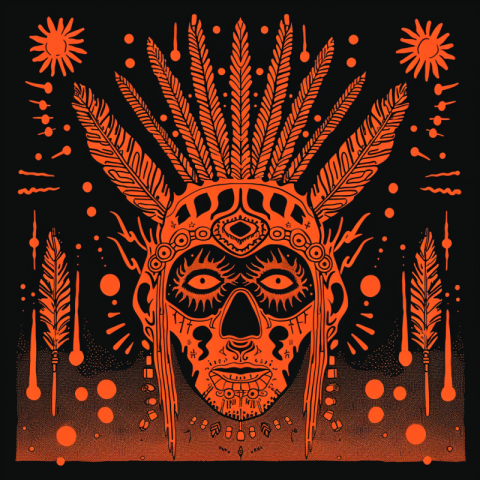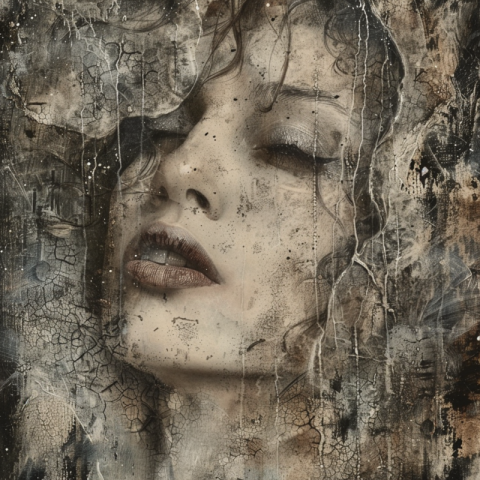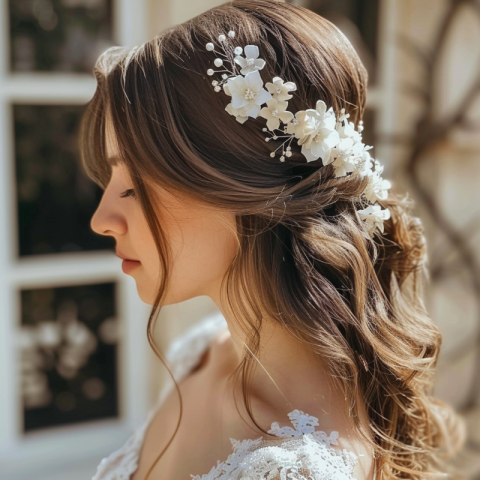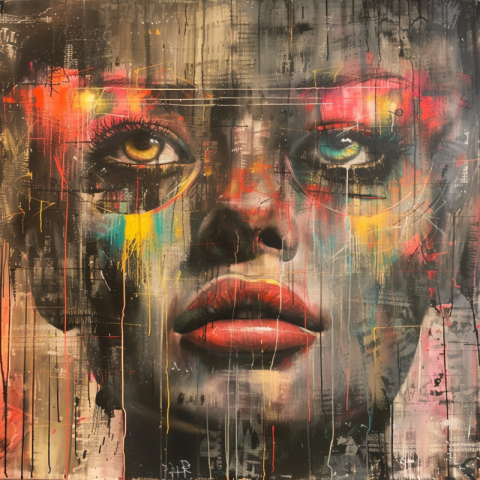











Celebrating Female Artists: Breaking Barriers and Shaping Art History
Throughout history, female artists have made significant contributions to the art world, creating powerful and influential works that have shaped artistic movements and challenged societal norms. However, their achievements have often been overlooked or marginalized due to gender biases and systemic barriers within the art establishment. This exploration celebrates the remarkable accomplishments of female artists, highlighting their diverse styles, the obstacles they faced, and their enduring legacy that continues to inspire artists and art lovers today.
1. Early Challenges and Limited Opportunities:
For centuries, women faced significant challenges in pursuing careers as artists:
- Lack of Access to Education: Formal art training was often denied to women, who were excluded from art academies and apprenticeships.
- Societal Expectations: Women were expected to focus on domestic duties rather than professional pursuits.
- Limited Exhibition Opportunities: Galleries and museums were less likely to exhibit works by women.
- Attribution Issues: Some works by women were attributed to male artists or remained unsigned.
- Lack of Recognition: Critics and art historians often dismissed or undervalued the work of female artists.
2. Pioneers and Trailblazers:
Despite these challenges, many women persevered and made groundbreaking contributions to art:
- Artemisia Gentileschi (1593-1656): A Baroque painter known for her powerful and dramatic depictions of female figures, often from biblical or mythological stories. Her work challenged traditional gender roles and explored themes of female agency and resistance.
- Judith Slaying Holofernes
- Susanna and the Elders
- Self-Portrait as the Allegory of Painting
- Sofonisba Anguissola (c. 1532-1625): An Italian Renaissance painter who gained international recognition for her portraits. She served as a court painter to King Philip II of Spain.
- Élisabeth Louise Vigée Le Brun (1755-1842): A prominent French portrait painter who became the official painter to Queen Marie Antoinette. She was known for her elegant and flattering portraits of the aristocracy.
- Marie Antoinette with a Rose
- Self-Portrait in a Straw Hat
- Peace Bringing Back Abundance
- Angelica Kauffman (1741-1807): A Swiss-born Neoclassical painter who was a founding member of the Royal Academy in London.
- Rosa Bonheur (1822-1899): A French Realist painter known for her detailed and realistic depictions of animals. Her monumental painting The Horse Fair brought her international fame.
- The Horse Fair
- Ploughing in the Nivernais
- Weaning the Calves
3. Impressionism and Beyond:
The late 19th and early 20th centuries saw more women artists gaining recognition and challenging artistic conventions:
- Berthe Morisot (1841-1895): A founding member of the Impressionist movement, known for her delicate brushwork and intimate depictions of women and domestic life.
- The Cradle
- Summer's Day
- In a Park
- Mary Cassatt (1844-1926): An American Impressionist painter who often depicted the social and private lives of women, with a particular emphasis on the bond between mothers and children.
- The Child's Bath
- Little Girl in a Blue Armchair
- Mother and Child
- Camille Claudel (1864-1943): A French sculptor whose powerful and expressive works explored human emotions and relationships. Her career was overshadowed by her relationship with Auguste Rodin.
- The Waltz
- The Age of Maturity
- Clotho
4. 20th Century and Modern Art:
The 20th century witnessed a flourishing of female artists across various movements:
- Käthe Kollwitz (1867-1945): A German artist whose powerful prints, drawings, and sculptures expressed the suffering and hardships of the working class and the horrors of war.
- The Outbreak
- The Widow I
- The Mothers
- Paula Modersohn-Becker (1876-1907): A German Expressionist painter known for her bold use of color and her depictions of women and children.
- Self-Portrait on Her Sixth Wedding Anniversary
- Reclining Mother and Child
- Girl with Flower Vases
- Georgia O'Keeffe (1887-1986): An American Modernist painter famous for her large-scale paintings of flowers, New York skyscrapers, and New Mexico landscapes.
- Jimson Weed/White Flower No. 1
- Black Iris III
- Radiator Building—Night, New York
- Frida Kahlo (1907-1954): A Mexican painter known for her self-portraits, which explored themes of identity, the human body, and the female experience. Her work was also influenced by Mexican folk art and culture.
- The Two Fridas
- Self-Portrait with Thorn Necklace and Hummingbird
- The Broken Column
- Tamara de Lempicka (1898-1980): A Polish-born Art Deco painter known for her glamorous portraits of the wealthy and famous during the Roaring Twenties.
- Autoportrait (Tamara in a Green Bugatti)
- Young Lady with Gloves
- The Musician
- Louise Bourgeois (1911-2010): A French-American artist whose work spanned sculpture, installation, painting, and printmaking. Her art often explored themes of family, sexuality, and the unconscious.
- Maman
- The Destruction of the Father
- Cell (Choisy)
5. Contemporary Female Artists:
Today, female artists continue to push boundaries and make significant contributions to the contemporary art scene:
- Yayoi Kusama (born 1929): A Japanese contemporary artist known for her immersive installations, sculptures, and paintings, often featuring polka dots and vibrant colors.
- Cindy Sherman (born 1954): An American photographer and filmmaker known for her conceptual self-portraits that explore themes of identity, gender, and representation.
- Marina Abramović (born 1946): A Serbian performance artist whose work explores the relationship between performer and audience, the limits of the body, and the possibilities of the mind.
- Jenny Saville (born 1970): A British painter known for her large-scale, realistic paintings of female nudes.
- Shirin Neshat (born 1957): An Iranian visual artist known for her film, video, and photography work that explores the complexities of identity, gender, and politics in relation to Islamic and Western cultures.
6. Feminist Art Movement:
The feminist art movement of the 1960s and 1970s played a crucial role in challenging the male-dominated art world and advocating for greater recognition of female artists.
- Judy Chicago (born 1939): A feminist artist, art educator, and writer known for her large collaborative art installation pieces about birth and creation images, which examine the role of women in history and culture. The Dinner Party
- Miriam Schapiro (1923-2015): A feminist artist who was a leader in the Pattern and Decoration movement.
- The Guerrilla Girls: An anonymous group of feminist activist artists who use humor and provocative visuals to expose gender and racial bias in the art world.
7. Continuing Challenges and Progress:
While progress has been made, female artists still face challenges in achieving equal representation and recognition in the art world.
- Gender Pay Gap: Works by female artists often sell for less than comparable works by male artists.
- Underrepresentation in Museums and Galleries: Museums and galleries still exhibit and collect more works by male artists.
- Lack of Mentorship and Support: Female artists may have fewer opportunities for mentorship and professional development.
Conclusion:
Female artists have made extraordinary contributions to art history, overcoming significant obstacles to create powerful and influential works. From the Renaissance to the present day, their art has challenged conventions, explored diverse themes, and enriched our understanding of the human experience. While challenges remain, the increasing recognition of female artists and the ongoing efforts to promote gender equality in the art world offer hope for a more inclusive and representative future.
Female Artists, Women in Art, Feminist Art, Art History, Painting, Sculpture, Installation Art, Performance Art, Photography, Artemisia Gentileschi, Frida Kahlo, Georgia O'Keeffe, Yayoi Kusama, Cindy Sherman, Marina Abramović, Louise Bourgeois, Berthe Morisot, Mary Cassatt, Guerrilla Girls, Gender Bias in Art, Art World, Museums, Galleries, Art Education, Art Market, Feminism, Social Justice, Representation, Empowerment, Baroque, Renaissance, Impressionism, Modern Art, Contemporary Art, Abstract Expressionism, Pop Art, Surrealism, Realism, Portrait, Landscape, Still Life, Self-Portrait, Patronage, Art Criticism, Art Theory, The Dinner Party, The Horse Fair, The Two Fridas, Maman, Autoportrait, The Cradle, Jimson Weed, Judith Slaying Holofernes, Marie Antoinette, The Child's Bath, The Outbreak.

